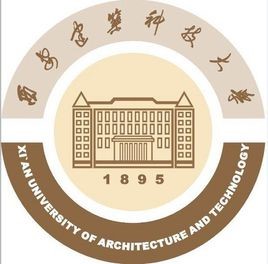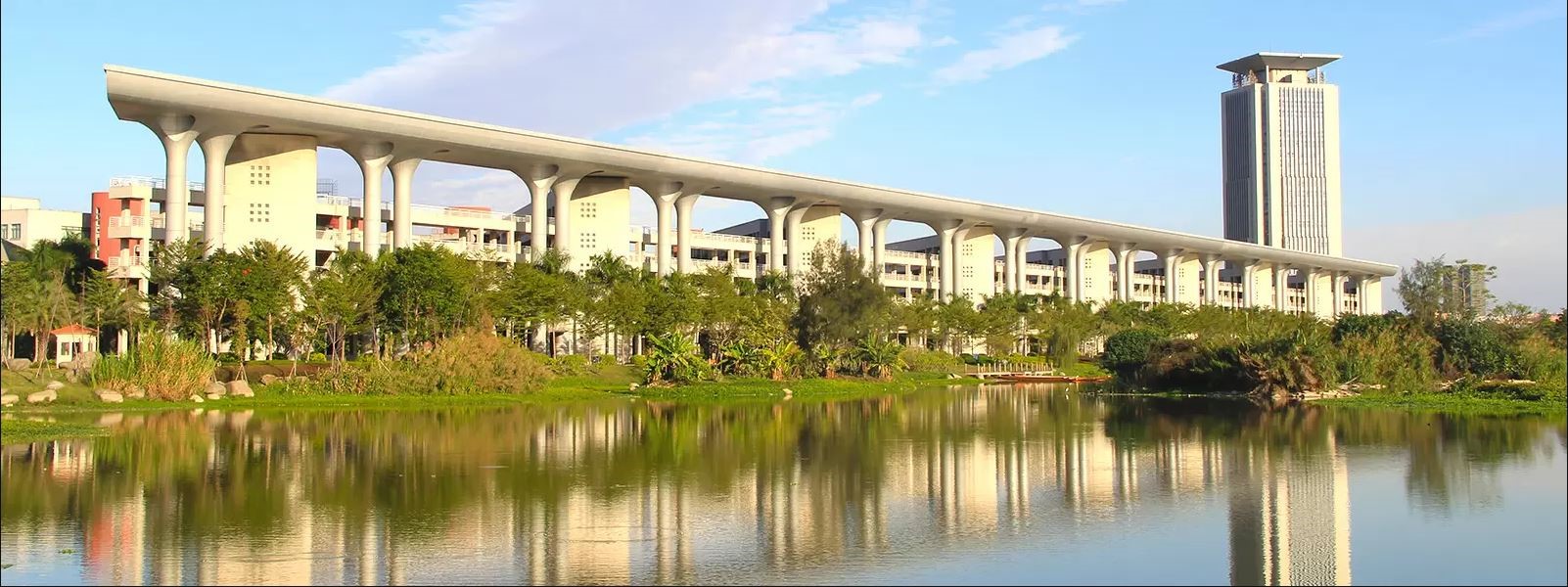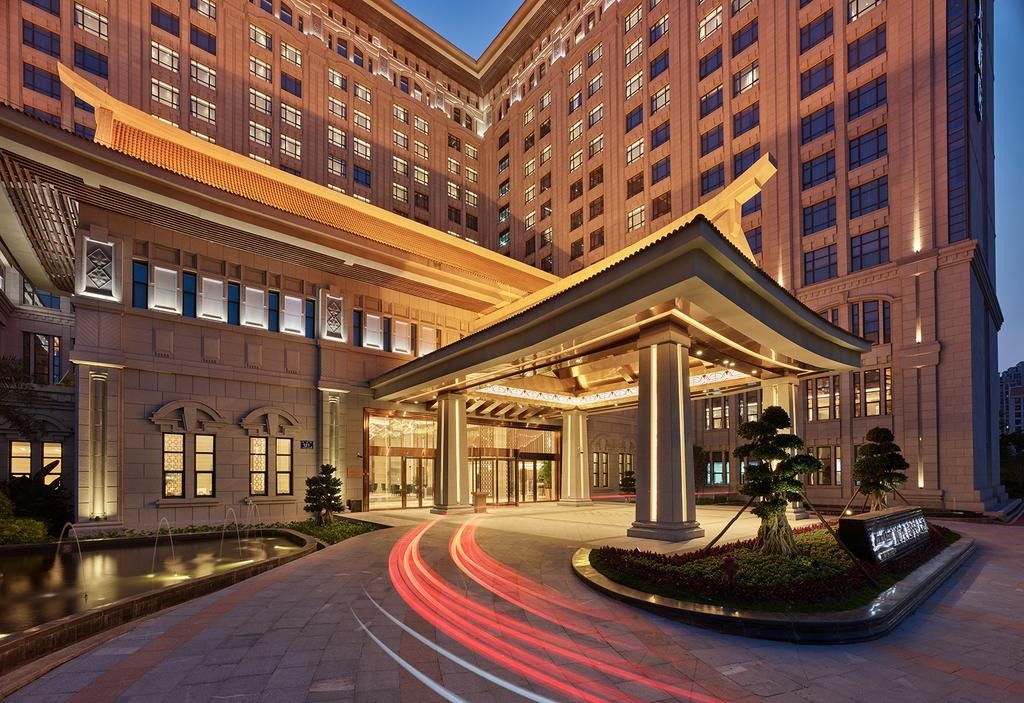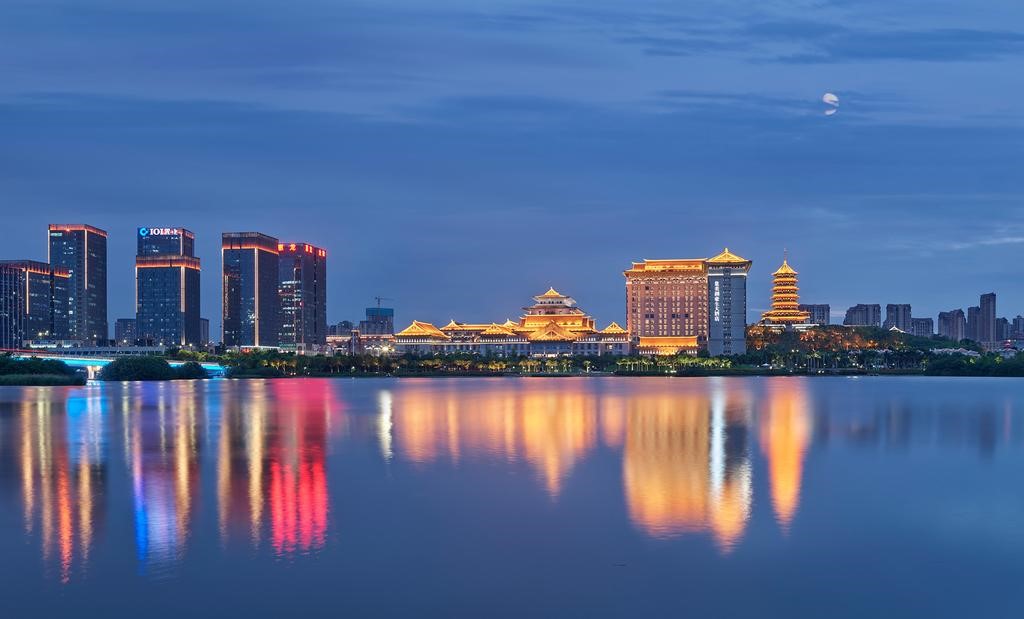3rd Announcement
The First International Symposium on Infrastructure Resilience and Sustainability for Belt and Road Countries



December 19-21, 2019
Xiamen, Fujian, China
Host
Huaqiao University
Xi’an University of Architecture and Technology
Organizer
College of Civil Engineering, Huaqiao University
Co-Organizer
Key Laboratory for Intelligent Infrastructure and Monitoring of Fujian Province
Key Laboratory for Structural Engineering and Disaster Prevention of Fujian Province
Key Laboratory for Structural Engineering and Seismic Resistance of MOE of China
Fujian Province Higher-Educational Engineering Research Centre for Intelligence and Automation in Construction
Introduction
The great initiative of co-building the "Silk Road Economic Belt" and the "21st Century Maritime Silk Road" (Belt and Road Initiative, BRI) provides new opportunities to strengthen the international collaboration on infrastructure resilience and sustainability study.
Huaqiao University (HQU) is a unique university in China having one campus in Xiamen, a critical node on the ancient marine Silk Road, and another one in Quanzhou, the starting point of the ancient Maritime Silk Road. Xiamen city, as one of the earliest established Special Economic Zones in 1980s, is a beautiful, livable, lovable costal city. Bearing the mission of the new BTI era, Xiamen has focused on the new goals of the BRI to face international collaboration with a more confident attitude and to facilitate the construction of an important hub city on the 21st Century Maritime Silk Road. Accompanying with the relocation of the College of Civil Engineering of HQU from Quanzhou to Xiamen, the development of the college entered a new era. Now the college has modern experimental study laboratories equipped with high performance test facilities. Two provincial key laboratories have been approved by the government, which provides valuable platforms to carry out high quality research and to train graduate students. In recent years, more new faculty members joined HQU and brought more power to the college.
Xi’an University of Architecture and Technology (XAUAT) is located in the well-known historical and cultural city of Xi’an, China, which is the eastern starting point of the Land Silk Road and one of the four great ancient capital cities with a history of over 3,100 years. The history of the XAUAT can be traced back to the Tianjin Beiyang School of Western Learning (Beiyang University) established in 1895. It has been known as one of the famous old eight universities in architecture and a leading higher education and research center in civil engineering and architecture in Northwestern China. XAUAT is also the home of the Key Laboratory for Structural Engineering and Seismic Resistance of Ministry of Education of China.
BRI is producing vast, often multilateral, infrastructure projects, creating huge demand for long-term resilient and sustainable infrastructure and BRI must be green and environment friendly for the purpose of protecting the common home we live in. The resilience and sustainability of infrastructures for BRI countries and other countries play key roles in supporting the transformation and upgrading of economic construction and development. Meanwhile, it plays key roles in avoiding structural, environmental, social and governance risks associated with the lifespan of each infrastructure project and achieving resource efficiencies, reducing environmental footprint, international collaboration, and getting long-term risk-adjusted returns from infrastructure developments.
It is critical to work with international thought leaders in the way of international collaboration without borders and to propose timely solutions to critical challenging tasks in realizing resilient and sustainable infrastructures under multi-hazards and harsh environment. In order to take advantage of the new opportunities coming with the BRI and to enhance international collaboration on infrastructure resilience and sustainability research, the College of Civil Engineering of HQU and the College of Civil Engineering of XAUAT decided to initiate an International Symposium on Infrastructure Resilience and Sustainability on Dec. 19-21, 2019. The two hosts of the symposium intend to establish a series symposium to be held in Xiamen and Xi’an alternately.
Scope and Topics
The topics of this symposium shall include but are not limited to:
⟡ Multi-hazards and their effects on infrastructures
⟡ Sustainable environment and smart city
⟡ Advanced sensing and nondestructive evaluation for infrastructures
⟡ Advanced experimental and simulation technology for infrastructures
⟡ Smart and high performance materials for infrastructures under harsh environments
⟡ Infrastructure retrofitting and rehabilitation
⟡ Big data and artificial intelligence for intelligent infrastructures
⟡ Environmental, social and governance risks associated with the lifespan of infrastructure
Symposium Advisors
Jinguang Teng, The Hong Kong Polytechnic University, China
Xilin Lu, Tongji University, China
Zhishen Wu, Southeast University, China
Hanbin Ge, Meijo University, Japan
International Academic Committee
Chair: Xilin Lu, Tongji University, China
Member:
Lorenzo Cantini, University of Politecnico di Milano, Italy
Jianfei Chen, Southern University of Science and Technology, China
Yuli Dong, Huaqiao University, China
Zixiong Guo, Huaqiao University, China
Hemant B Kaushik, IIT Guwahati, India
Ying Lei, Xiamen University, China
Qiusheng Li, City University of Hong Kong, China
Yuri Petryna, Technical University Berlin, Germany
Arno Pronk, Eindhoven University of Technology, Netherland
Weixin Ren, Hefei University of Technology, China
Bahram M. Shahrooz, University of Cincinnati, USA
Jie Shan, Purdue University, USA
Qingxuan Shi, Xi'an University of Architecture and Technology, China
Hoon Sohn, Korea Advanced Institute of Science and Technology, Korea
Gangbing Song, University of Houston, USA
Bin Xu, Huaqiao University, China
Yao Yao, Xi'an University of Architecture and Technology, China
Tao Yu, The Hong Kong Polytechnic University, China
Bing Zeng, China Metallurgical Construction Research Institute, China
Ying Zhou, College of Civil Engineering, Tongji University, China
(To be updated)
Organizing Committee
Chair: Zixiong Guo, Huaqiao University, China
Co-Chair: Bin Xu, Huaqiao University, China
Qingxuan Shi, Xi'an University of Architecture and Technology, China
Member: Deng Zhang, Baoling Yuan, Yang Liu, Jingsi Huo, Chen Wang, Yaobing Zhao,
Xizhan Ning, Wei Hou, Man Li, Yong Ye, Fei Gao, Wei Chen
Preliminary Program
Dec 19 |
|
08:00-20:00 |
Registration |
|
Dec 20 |
|
08:00-08:10 |
Welcome Remarks |
Head of HQU |
|
08:10-08:20 |
Opening Remarks |
Chair of the academic committee, Xilin Lu |
|
08:20-10:00 |
Advanced sensing techniques and structural system innovation |
Chair: Hanbin Ge, Yuri Petryna |
Keynote Session I |
08:20-08:45 |
Enhancement of structural longevity and Resilience for sustainable infrastructure |
Zhishen Wu |
08:45-09:10 |
Challenges for structural health monitoring of civil infrastructure |
Yuri Petryna |
09:10-09:35 |
Making invisible visible using active thermography |
Hoon Sohn |
09:35-10:00 |
Innovative low-damage structures for high-seismic regions |
Ying Zhou |
|
10:00-10:25 |
Coffee Break and Group Photo |
|
|
10:25-12:00 |
Condition evaluation and NDT approaches |
Chair: Zhishen Wu Jie Shan |
Keynote Session II |
10:25-10:50 |
Structural connection monitoring |
Gangbing Song |
10:50-11:15 |
Ambient vibration-based seismic evaluation of an existing continuous girder bridge |
Weixin Ren |
11:15-11:40 |
Non-destructive tests applied on historical structures for damage prevention and cultural heritage preservation. |
Lorenzo Cantini |
11:40-12:05 |
Some new developments of Kalman theory for structural health monitoring and vibration control |
Ying Lei |
|
12:05-13:00 |
Lunch |
|
|
13:00-13:45 |
Lab Tour |
|
|
14:00-16:05 |
Materials and structure behavior under hazardous environment |
Chair: Jianfei Chen Hemant B. Kaushik |
Keynote Session III |
14:00-14:25 |
Ductility evaluation of thin-walled steel structures made of high strength steel |
Hanbin Ge |
14:25-14:50 |
A story of masonry in earthquake country: Four different perceptions |
Hemant B. Kaushik |
14:50-15:15 |
TBD |
Jianfei Chen |
15:15-15:40 |
Monitoring of Extreme Winds and Wind Effects on Skyscrapers during Super Typhoon Mangkhut |
Qiusheng Li |
15:40-16:05 |
Spalling and constitutive model of concrete at high temperatures |
Yao Yao |
|
16:05-16:15 |
Coffee Break |
|
|
16:15-18:20 |
Infrastructure and city sustainability |
Chair: Tao Yu, Bahram M. Shahrooz |
Keynote Session IV |
16:15-16:40 |
Understanding cities through crowd sensing |
Jie Shan |
16:40-17:05 |
Mechanism of defect detection for concrete-filled tubes with stress wave measurement |
Bin Xu |
17:05-17:30 |
Ice composites for the 2022 winter Olympics |
Arno Pronk |
17:30-17:55 |
Hybrid FRP-Concrete-Steel Tubular Members |
Tao Yu |
17:55-18:20 |
Application of 17.8-mm Strands in Prestressed Bridge Girders – Promises and Challenges |
Bahram M. Shahrooz |
|
18:30-20:30 |
Dinner |
|
Dec 21 |
|
08:30-18:00 |
Investigation for Historical Infrastructure and Buildings |
|
Language
The official language of this symposium is English. PPT file for presentations will be collected at the registration.
Fees
Registration fee is free.
Symposium Avenue
The symposium will be held at Xiamen Campus of HQU

Hotel
Howard Johnson by Wyndham Jimei Lake Plaza Xiamen
Address: 121 Ligong Road, Jimei District, Xiamen, Fujian 361024 China
Tel: 0592-6208888

